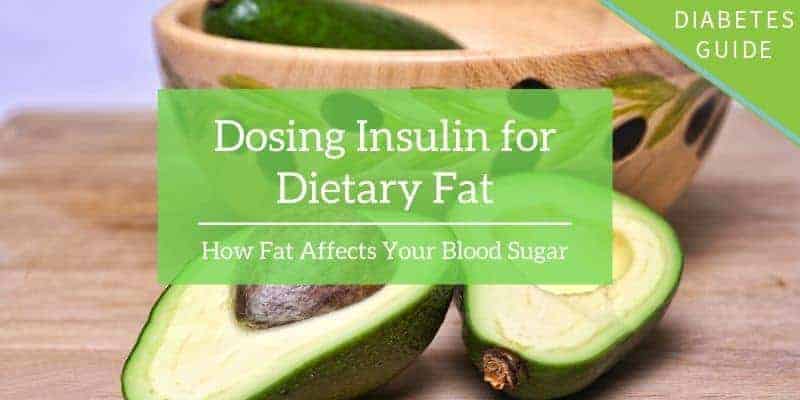The second we’re identified with diabetes, we’re taught that carbohydrates have the most important influence on our blood sugar — and that is true — however dietary fats and protein have an effect on your blood sugar, too.
We’d like fats in our food plan, for taste and well being, however as folks with diabetes, we want to concentrate on when and why it impacts our blood sugars, too.
On this article, we’ll focus on how dietary fats impacts your blood sugar ranges and your insulin wants.
What’s dietary fats?
Fats is a “macronutrient,” similar to carbohydrates and protein. Macronutrients are the only supply of energy and gas for the human physique!
Dietary fats comprises 9 energy for each gram — greater than twice as a lot as protein and carbohydrates, at 4 energy per gram. However that doesn’t imply fats is unhealthy. Really, dietary fats is important on your long-term survival!
However dietary fats is not damaged down into glucose like carbohydrates (and generally protein). As a substitute, it’s damaged down into fatty acids. With out these fatty acids out of your food plan, your physique would finally fail to perform.
You want fats in your food plan to:
- Soak up nutritional vitamins A, D, E, & Okay
- Protects your organs
- Keep wholesome progress of pores and skin, hair, and nails
Dietary fats can be very satiating. For instance, consuming an apple by itself will go away you feeling hungry, however consuming an apple together with substantial fats from peanut butter or cheese will give your physique longer-lasting gas as a result of it takes longer to digest fats than carbohydrates.
How dietary fats impacts your blood sugar
A meal containing 8 grams of fats received’t have a noticeable influence in your blood sugar ranges, however consuming greater than 15 grams of fats in a single sitting or quick time period will create some bother in case you’re not ready for it.
Let’s have a look…
Dietary fats can delay digestion by a number of hours
If you eat a big serving of dietary fats in a single sitting, it is going to decelerate the digestion of the carbohydrates in your meal, too.
For individuals who don’t take insulin, this may generally really assist forestall post-meal spikes in your blood sugar.
For individuals who take insulin, this is usually a tough factor to handle, as a result of it modifications the timing of when your physique wants insulin for that meal. In the event you take insulin once you begin consuming, like you might be usually instructed to do, the insulin will develop into lively in your bloodstream earlier than the carbohydrates are digested and damaged down into glucose.
As a substitute, it’s superb to unfold your insulin dose out a bit. In the event you’re consuming a high-fat meal containing carbohydrates, Gary Scheiner, MS, CDE writer of Suppose Like a Pancreas suggests the next:
- Cut up your calculated insulin dose in half.
- Take the primary half of your dose once you start consuming.
- Take the second half of your dose 1 to 2 hours after you’ve completed consuming.
- For these utilizing an insulin pump, you are able to do this with an “prolonged bolus.”
- For these taking a number of every day injections, you may merely take two separate injections.
By spreading your meal dose out over a number of hours, you’re matching the speed of digestion of that high-fat meal.
Dietary fats can set off your liver to launch glucose, too!
Sadly, it’s not at all times so simple as splitting your insulin dose in half, due to actually high-fat meals — like pizza, Chinese language meals, or wealthy ice cream.
If you eat a meal containing 30 or extra grams of fats (which is straightforward to do with a number of slices of pizza), that high-fat content material can influence your blood sugar for as much as 12 hours due to your liver.
Usually, your liver produces a really small quantity of glucose all day lengthy, 24 hours a day. This helps present your physique and your mind with the gas it wants when you sleep, and between meals.
The sugar produced by your liver comes from its “glycogen shops,” that are primarily saved glucose. Your liver is designed to launch this “back-up” glucose as a supply of gas for different conditions, too, like throughout adrenaline-inducing curler coaster rides, soccer video games, hectic arguments, daybreak phenomenon, and “struggle or flight” fearful moments.
If you eat a really great amount of fats, your liver produces extra glucose due to insulin resistance. Your liver senses heightened ranges of insulin resistance because of the massive fats amount and tries to steadiness this by producing extra glucose.
That is usually suppressed by the presence of insulin — one thing non-diabetics handle mechanically by producing extra insulin. In folks with diabetes, it means we have to take extra insulin for generally as much as 12 hours after a really fatty, heavy meal.
Gary Scheiner recommends a number of methods of managing this:
- For pumps: set a brief basal price enhance by 50 % for 8 hours after consuming.
- For injections: take an injection of NPH (lasts 8 to 10 hours) or Common (lasts 4 to six hours) insulin after consuming.
- On high of splitting your meal dose, you may add one other small injection of fast-acting insulin 4 hours after consuming.
Work together with your healthcare crew to determine the perfect strategy for you!
Why ketogenic diets can enhance your insulin wants
This glucose manufacturing from the liver can be why some folks see their insulin wants rise after they start following a ketogenic food plan. This may be very complicated and irritating contemplating low-carb and ketogenic diets are promoted as lowering your insulin wants and decreasing your blood sugar ranges.
For a lot of, that’s the case! However for some, it’s not that straightforward.
The intensely excessive fats consumption in a high-fat weight-reduction plan strategy at first means you want much less insulin as a result of there are so few carbohydrates, however it might enhance your insulin wants by means of the insulin resistance created by the presence of dietary fats.
For some folks, this turns into more durable to handle than merely consuming a food plan containing extra carbohydrates. It might imply chances are you’ll profit from a lower-carb, medium-fat, medium-protein food plan, as an alternative of a particularly excessive-fat food plan.
For others, a high-fat, low-carb food plan means they expertise smoother blood sugar ranges and decrease insulin doses total.
Regardless, you’ll have to determine what works finest on your physique and work intently with an skilled endocrinologist or CDE to fine-tune your insulin-dosing strategy!










